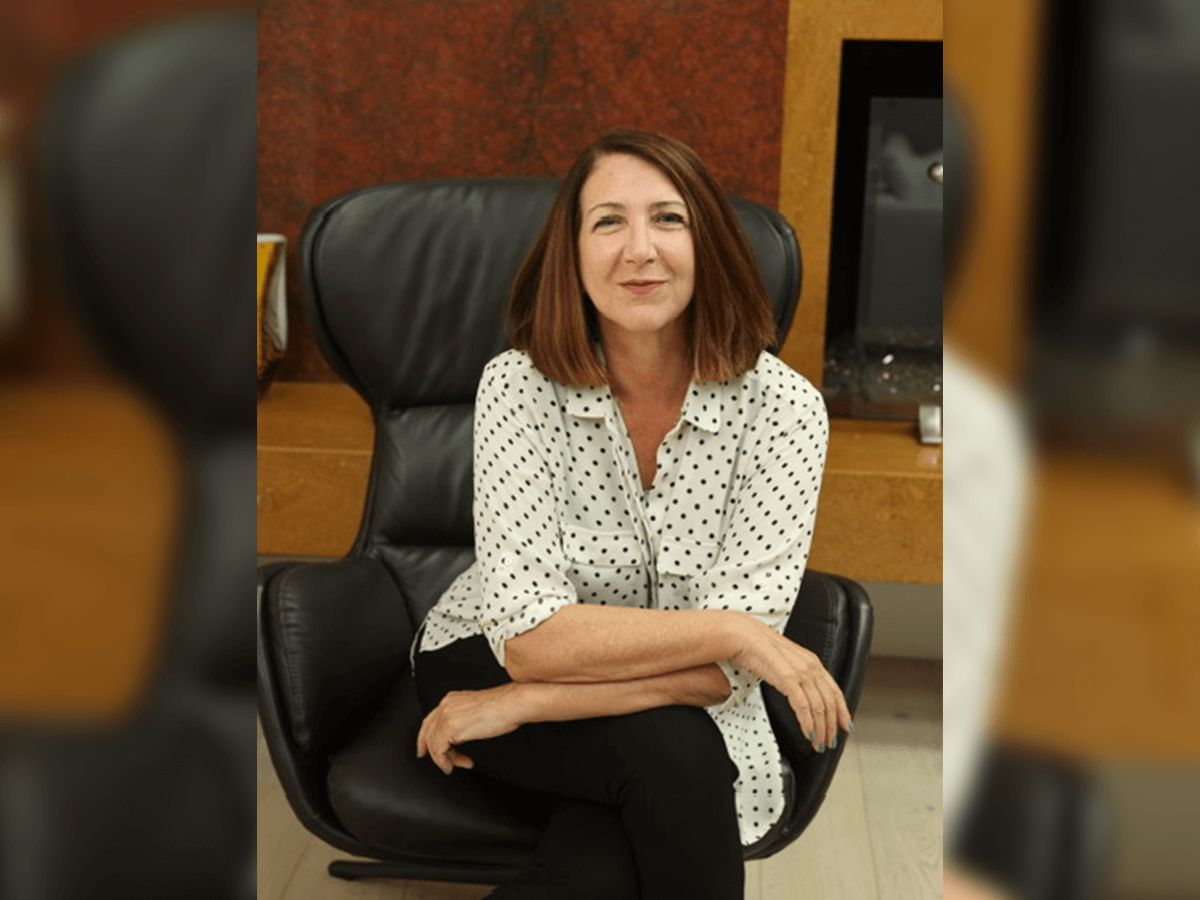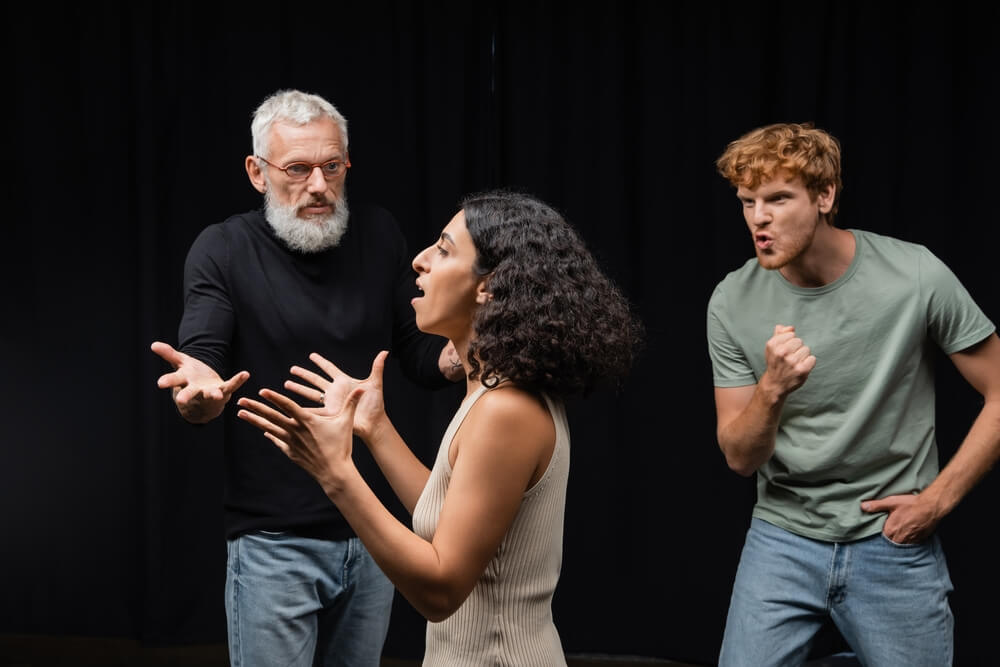Finding the Right Tone in Commercial Auditions
She flashed a broad smile and delivered her line. I stopped recording and said, “That was great! Thanks for coming in.” As she gathered her things and headed for the door the phone rang. The casting director on the other end said, “Do another take. She’s gotta bring it way down.”
I had no idea what that meant. It was my first time running a casting session. I had no clue how to direct actors, but I didn’t want the casting director watching the monitor in the other room to know that, so I agreed and hung up. Bring it down? Like, get lower to the floor? (Seriously, NO clue.) I turned to the actress and parroted the direction as I brought over a chair. You know, so the actress could get lower. She nodded and looked like she understood the note. We did another take, but before she even finished her line the phone rang again. “She’s still over the top.” Over the top of what? She’s sitting.
Ok, so I sound pretty clueless here, but in my defense, I was. This happened only a couple of weeks after the bright-eyed 26-year-old version of myself drove out to LA from the Midwest with a stack of screenplays in hand and no idea this job even existed. Shortly after I rolled into town, I started working at Crate & Barrel while I looked for something industry related. A week later I answered an ad in the back of The Hollywood Reporter for an office manager position and lucked into a job at a busy casting facility.
When I say I lucked into the job, I mean the only reason I even got the interview was that my future bosses – two extremely high-profile female casting directors who were planning to hire a woman for the job – thought my name was Justine instead of Justin. When they mentioned their upcoming office Christmas party, I bribed them by offering my Crate & Barrel employee discount to buy champagne flutes and employee gifts. I’d like to think my previous video production experience had something to do with my getting the gig, too, but we did have a pretty kick-ass Christmas party that year.
Not long after I started working there, an emergency session came up and nobody else was available to run it on such short notice. This was it – my big chance to prove I could be more than an office manager, so I asked if I could run it. I knew how to work the camera, but as previously mentioned, I had no idea how to direct actors. Well, wait, that’s not entirely accurate.
I was an ok communicator and understood that was a big part of directing, but the real issue was that I had no idea how to recognize a good performance in a commercial audition. I had been watching commercials my entire life without really paying close attention to the way the actors were acting. I, like most average Joes who watch TV, was under the false impression that a commercial actor is supposed to play up the comedy and kind of punch the delivery to help sell the product. I couldn’t have been more wrong.
Keep it Grounded.
The vast majority of commercials, comedic, heart-warming or otherwise, are based on the foundation that the advertised product is an essential part of real life. We see how the product solves a problem that someone has. We see how the product makes someone’s life better because they use it.
The only way this logic works is if the characters portrayed using the product are completely relatable. They are our best friends. They are our neighbors. They are our family members. They are us. Of course, there is often a foil in the commercial (the person who doesn’t subscribe to the advertised service or product), and in comedic commercials, this person often carries the comedic load. Just like the hero of the spot (the person who uses the product), the foil also needs to be relatable enough for the audience to recognize them as existing in the real world.
We’re supposed to believe these are real people who find themselves in specific situations relating to the product. Sometimes the situations are very realistic – parents watching a baby’s first steps, a brother and sister getting annoyed with each other on a long family road trip, or a neighbor noticing a fancy new car pulling into the driveway next door. If you were auditioning for one of these scenarios, it might seem natural to ground the performance in reality to let the emotion of the moment stand out, and your instincts would be spot on.
But sometimes the situations are ridiculous – a father hooks his son up to a lie detector to find out who’s been using more data than their family’s plan allows. In this scenario, it’s not as easy to determine what the level of your performance should be, and it would be easy to fall into the trap of playing the comedy of the scene. The easiest way for the audience to find the humor in the ridiculous situation, however, is for the father and son to be completely relatable and grounded in reality. They are real people in a ridiculous situation, but they would never acknowledge the situation as such. In their world, it’s completely plausible, and more importantly, it’s their reality.
Evaluating Your Own Performance.
Now that you know what to aim for in most commercial auditions – grounding the performance in reality – you have to figure out how to get there. Finding the right tone in a self tape can be tough, especially for those not familiar with the commercial world like actors straight out of college or comedians killing it on the comedy circuit doing stand-up or sketch, but I’ve also seen some very seasoned actors completely stymied by self tapes.
One successful actor I’ve known for more than 20 years consistently submits self tapes that are not up to the usual standards of his auditions in the studio. After he came in for an in-person audition and, as usual, completely nailed it, I pulled him aside and asked why he tends to “phone in” his performance in self tapes. When I saw the confusion on his face, I quickly backpedaled because I realized he had no idea what I was talking about. He thought he was nailing it.
The ability to recognize a good performance has never been more important for actors auditioning for commercials than it is now because self tapes have suddenly forced actors to become their own session directors. Not only do actors face all the additional technical challenges that self tapes have introduced, but they now have to judge their own performance to decide which two or three takes to upload for the audition request.
If you are unsure of a choice you should make in an audition performance, when in doubt, go to reality. Ask yourself the simple question, “How would I really react in this situation?” If your choices were true to the scene, the character and the grounded reality of the situation, then great. Click upload and don’t overthink it. What’s more important than being funny or standing out in some way is to be believable.
Exceptions to the rule.
As my high school freshman English teacher Mr. Hughes always said, “There is no exception to the rule that every rule has an exception.” (I didn’t find out he was quoting James Thurber until much later when I got dinged using the quote in an English paper in college.) Regardless of the source of the wisdom, the same idea applies to commercial auditions.
Not to confuse you more, but you must be careful about following a blanket rule because every audition is different, and not all directors have the same approach. I can think of at least one current campaign on the air with an ensemble cast that tends to go very over the top. They are clearly trying to make the series of spots feel more like a multi-camera sitcom than a commercial campaign. All they’re missing is the canned laughter. This strategy of using a sitcom as a model is fairly common for extended campaigns, but the tone of the commercials depends on how the director plans to execute them.
If the commercial for which you are auditioning is part of an existing campaign, search for the most recent spots they have released and try your best to stay in line with the brand they have already created. If the director of the commercial is noted on the breakdown, look up the director’s reel to get a feel for their creative sensibilities. If those materials aren’t available, use the clues you have been given in the self tape instructions and the script itself.
It turned out that in that first casting session I directed so long ago, I was steering the talent toward the exception rather than the rule. I was not equipped with any of the tools I mentioned to recognize and adjust an actor’s performance. That’s why I fielded a lot of calls from the casting director telling me what to say to the actors that day. While my cover was blown, and it was clear I had no idea how to direct actors, by the end of the day I started to understand what the CD was talking about. My first chance to direct a casting session turned into the first of many lessons I learned about directing actors and about the casting process in general.
On my journey to becoming a casting director, there were plenty of things I learned by screwing up at least once, but at least I wasn’t learning heart surgery. I look forward to sharing these stories with you with the hope that you gain a better understanding of how to do your job in front of the camera by hearing about the lessons I learned behind the camera.
Looking to get your big break? Sign up or login to Casting Networks and land your next acting role today!
You may also like:
- My Casting Story: Hiram A. Murray on ‘Come Out Fighting’
- 3 Things Actors Should Do Now to Financially Survive the Writers’ Strike
- How Do You Respond to Negative Feedback and Rejection?
Over the past two decades Justin has cast many high profile, award-winning projects with some of the most creative and successful directors and creative teams in the industry. In 2014 Justin co-founded Camera Left / Stage Right, a collective of industry professionals committed to teaching actors how to improve their audition technique. Justin has also co-created the web-based app TheWaitingRoom, a contactless system for actors to check into auditions, and has served on the Board of Directors of the CCDA/LA since 2016, including a term as president from 2018-2019. He currently serves as vice president of the organization. Justin recently opened J Hook Casting where he applies decades of experience to every project.




